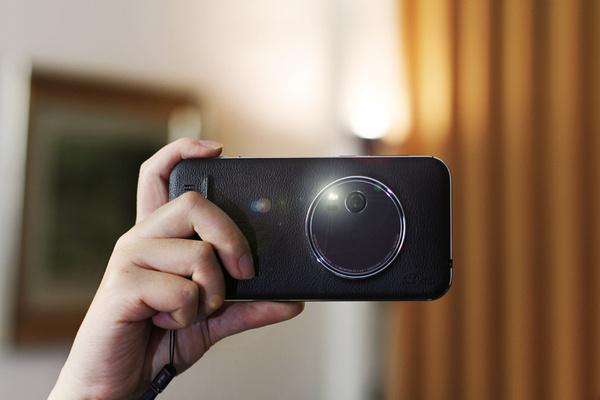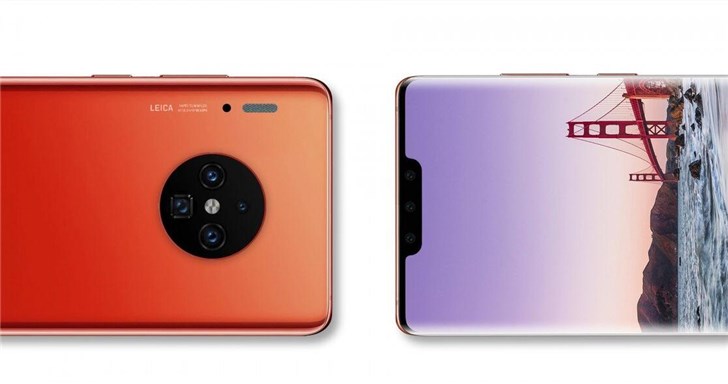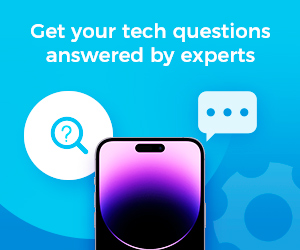With camera specs becoming one of the primary battlegrounds for smartphone manufacturers, it’s no surprise that last year’s Google Pixel 3 XL and Huawei P30 Pro both hung their hats on the quality of their cameras. Both phones were very well-received, and with both Google and Huawei expected to release follow-ups in late 2019, it’ll be interesting to see what they come up with next. Which phone will be 2019’s photography king?
While neither phone has been released yet, there have been more than enough rumors floating around for us to speculate. Read on for rumor roundups for both the Pixel 4 and Mate 30, as well as a comparison between the two.
Overview:
- What’s the Deal with Phone Cameras?
- Huawei Mate 30 & Google Pixel 4 Release Dates
- Google Pixel 4 Rumor Roundup
- Huawei Mate 30 Rumor Roundup
- Google Pixel 4 XL VS Huawei Mate 30 Pro
- Exclusive Discount for Pixel 4 Accessories
What’s the Deal with Phone Cameras?
The extremely important and competitive holiday season is coming up, which means we can expect a deluge of new phones and other devices. Samsung has already gotten a head start, launching the Galaxy Note 10 series in August, while Apple will likely announce the iPhone 11 series on September 12th. Huawei is expected to announce the Mate 30 series on September 19th, while Google is expected to release the Pixel 4 series on October 4th.
Huawei Mate 30 & Google Pixel 4 Release Dates:
- Huawei Mate 30: September 19th
- Google Pixel 4: October 15th
This year, we’ve already seen a number of innovative new features, especially when it comes to camera technology. For the average consumer, camera specs have long been a dominant factor in deciding what kind of phone to buy. In the dog-eat-dog world of smartphone photography, phone manufacturers are always looking to leapfrog both their competitors and themselves. In 2019, much of the competition and innovation has been focused on optical zoom capabilities.
For the Note 10, Samsung moved both the front and rear cameras to the center of the phone. The Galaxy Note 10 has a 3-lens rear camera array, combining a 16 MP super wide-angle lens, a 12 MP wide-angle, and a 12 MP telephoto (along with a 10 MP front camera). The Note 10+ also adds a Time of Flight (ToF) sensor, which accurately measures depth data and improve AR.
Apple’s rumored changes to the iPhone’s rear camera were, suffice to say, controversial. It’s now widely known that the new iPhone 11 series rear camera will be arranged in a rather large square, which many have deemed unsightly. Even if you consider the new form factor a downgrade, at least the front camera will be upgraded from 7 megapixels to 12 megapixels. The iPhone 11 Pro and iPhone 11 Pro Max will both have three rear cameras, including a main camera, telephoto, and a new wide-angle lens. The iPhone11 meanwhile will still have only two cameras.
While some of what we know about both the Google Pixel 4 and Huawei Mate 30 comes from leaks and rumors, it seems certain at this point that both Google and Huawei will be looking to seriously improve their cameras, in order to stay ahead of the competition (including each other). Of course, when deciding on the best camera phone, the camera itself isn’t everything. For example, pretty much every phone camera will automatically post-process the photos it takes, which can affect how a picture comes out even more than camera resolution. While you could always invest in a cloud storage service, storing photos directly to your phone is still more convenient, so you might also want to consider the storage space of a prospective phone. You’ll also want a phone with a long enough battery life that it won’t die on you after a long day of taking photos.
Google Pixel 4 Rumor Roundup:
Whereas most phone companies stay mum about upcoming devices prior to their launch dates, Google has been surprisingly forthcoming about Pixel 4 since announcing its development in April. Even more surprising was the news that Pixel 4 would feature a square camera array. In a picture tweeted by the official Made by Google account on June 12th, the Pixel 4 was shown with a square camera in the top left corner, much like the iPhone 11. Images “leaked” by Google of the front showed that the Pixel 4 XL would return to a top bezel rather than keep the Pixel 3 XL’s widely-reviled notch. This bezel is rumored to be packed full of goodies, including multiple face-unlocking cameras, a front-facing camera, ambient light/proximity sensors, an audio port, and the much-anticipated Soli radar chip.
Announced in a teaser video released by Google, the motion-sensing Soli radar chip will not only allow for camera-less face unlocking, but also hands-free motion/gesture controls.
As for the cameras themselves, the Pixel 4 and Pixel 4 XL will both have a single front and two rear cameras. The Pixel 3 XL notably came equipped with two 8 MP front cameras, including a wide-angle and telephoto. On the other hand, a single rear camera has always been a signature feature of the Pixel. While this reversal has come as a bit of a surprise, there’s no reason to believe yet that features like Night Sight will no longer be available. As can be seen in the official photo, the Pixel’s camera array has a flash and an as-of-yet unidentified sensor, possible a ToF.
Google has compensated for its lack of multiple cameras through various algorithms and Machine Learning, a field it has a huge advantage over other companies in. The Pixel 3’s Super Res Zoom compensated for its lack of “true” optical zoom by combining multiple frames to fill in the details when zooming in. Super Res Zoom provides photos comparable to those taken by a 2x optical zoom lens. Google’s Pixel Visual Core image processor and machine learning software can intelligently identify what the photo should look like and the lens you want. Evidently, Google can get pretty far on software alone, but considering the Huawei P30 Pro’s insane 5X optical zoom it wouldn’t be surprising if they were looking for ways to stay competitive.
The Pixel 4’s display is expected to be between 5.6 inches and 5.8 inches, while the Pixel 4 XL’s is supposedly between 6.2 inches and 6.4 inches. Like Pixel 3, Pixel 4 is expected to use Full HD+, though the refresh rate will be upgraded from 60 Hz to 90 Hz. Likewise, the Pixel 4 XL will likely use Quad HD+, the same as the Pixel 3 XL but with a 90 Hz refresh rate. With a 90 Hz refresh rate, scrolling through apps and web pages will be smoother, and some games will look sharper than on other phones, most of which have a refresh rate of 60 Hz. The battery capacity is rumored to be not that different from the Pixel 3 series, at 2800 mAh for the 4 and 3700 mAh for the 4 XL.
Huawei Mate 30 Rumor Roundup:
Promotional materials for the Huawei Mate 30 were leaked to the Chinese social media platform Weibo. The tagline of the poster reads “Reconstructing Imagination” (translated from Chinese), and shows a rather shocking new design for the Mate 30 Pro. The small square camera housing of the Mate 20 has seemingly been replaced with a frankly massive “Oreo” shaped array containing four unidentified sensors. The poster also states that cameras will once again be developed by Leica, the phone will have 40W super-fast charging and 27W super-fast wireless charging, and will run on a Kirin 990 processor. The Kirin 980, the chip developed in-house by Huawei for the Mate 20, soundly beat the Qualcomm Snapdragon 845 in multiple performance metrics, so it will be interesting to see how the 990 fares. It should be noted that other leaked photos have the Mate 30 Pro with square or rectangular (but still distractingly huge) camera arrays, so take the image with a heaping tablespoon of salt.
As for camera specs, details could at best be described as “sketchy.” While the Mate 30 may be sticking with the P30’s Leica Triple Camera System, most leaked images of the P30 Pro show it with a quad-camera. Both phones are expected to have the 40 MP “Super Sensing Camera” introduced by the P30. Huawei has also recently filed trademarks paperwork with EURIPO for something called the “Cine-Lens” and something called the “Camera Matrix.” In its patent application, the Camera Matrix is listed under “optical lenses,” meaning it is likely either a lens itself or the camera array as a whole. Based on its name, the Cine-Lens may be a dedicated video camera or related post-processing software.
Additional leaked details (in Chinese) from Tencent Digital provide more exact information about the Mate 30 and 30 Pro’s cameras. According to their sources, the Mate 30 Pro’s exact camera setup will be a dedicated video camera (likely the Cine-Lens), a Super Sensing camera, a telephoto, and a 3D ToF sensor. The Super Sensing camera will have a focal length of 18-80 mm (meaning 3x optical zoom) and an aperture of f/1.6 to f/2.4. The video camera will be an 18 mm ultra-wide lens with an aperture of f/1.6, while the telephoto lens will be 80 mm with an aperture of f/2.4. Not making a return, it would seem, is the P30 Pro’s periscope lens.
It’s been rumored that the Mate 30 Pro will use a 6.71-inch AMOLED display, which is slightly under the Galaxy Note 10+’s 6.8-inch screen, but nonetheless huge. The display is also rumored to have a refresh rate of 90 Hz, like the Pixel 4.
As previously stated, the Mate 30 (or at least the Mate 30 Pro) is expected to support 40W super-fast cabled charging and super-fast 27W wireless charging. Huawei’s commitment to battery capacity continues to impress, with reports placing the exact numbers at 4200mAh and 4500mAh batteries for the Mate 30 and Mate 30 Pro, respectively.
It’s a lot of information to take in, so to recap let’s draw a few quick comparisons between the Google Pixel 4 XL and the Huawei Mate 30 Pro.
Google Pixel 4 XL VS Huawei Mate 30 Pro
| Model | Google Pixel 4 XL | Huawei Mate 30 Pro |
| Release Date | October 4th | September 19th |
| Front camera | Single-camera | Double camera |
| Rear camera | 2 camera lenses(12MP phase detection autofocus + 16MP telephoto lens)
Possible ToF sensor |
4 camera lenses (“Cine-Lens” camera + Super Sensing camera + telephoto camera + 3D ToF camera) |
| Screen size | 6.2-6.4 inches | 6.71 inches |
| Refresh rate | 90 Hz | 90 Hz |
| Battery capacity | 3700 mAh | 4500 mAh |
| Hardware | Qualcomm Snapdragon 855 SoC6GB RAM
64GB/128GB storage |
Kirin 990,6GB RAM + 128GB storage
8GB RAM + 128GB storage |
Which phone do you think will be the best camera phone in 2019? Based on what we know so far current rumors, the Huawei Mate 30 has a technically better camera based on megapixel count, variety, and optical zoom capabilities, but Pixel 4 makes up for it with intelligent algorithms that help with post-processing and may result in better overall quality. Deciding which camera is best for you depends on your priorities.
EXCLUSIVE DISCOUNT FOR PIXEL 4 ACCESSORIES
Check out ESR’s exclusive discount for screen protectors and cases for the Google Pixel 4 and Google Pixel 4 XL. Simply enter “10BIT” during checkout to get 10% off any Google Pixel 4 case or screen protector.





